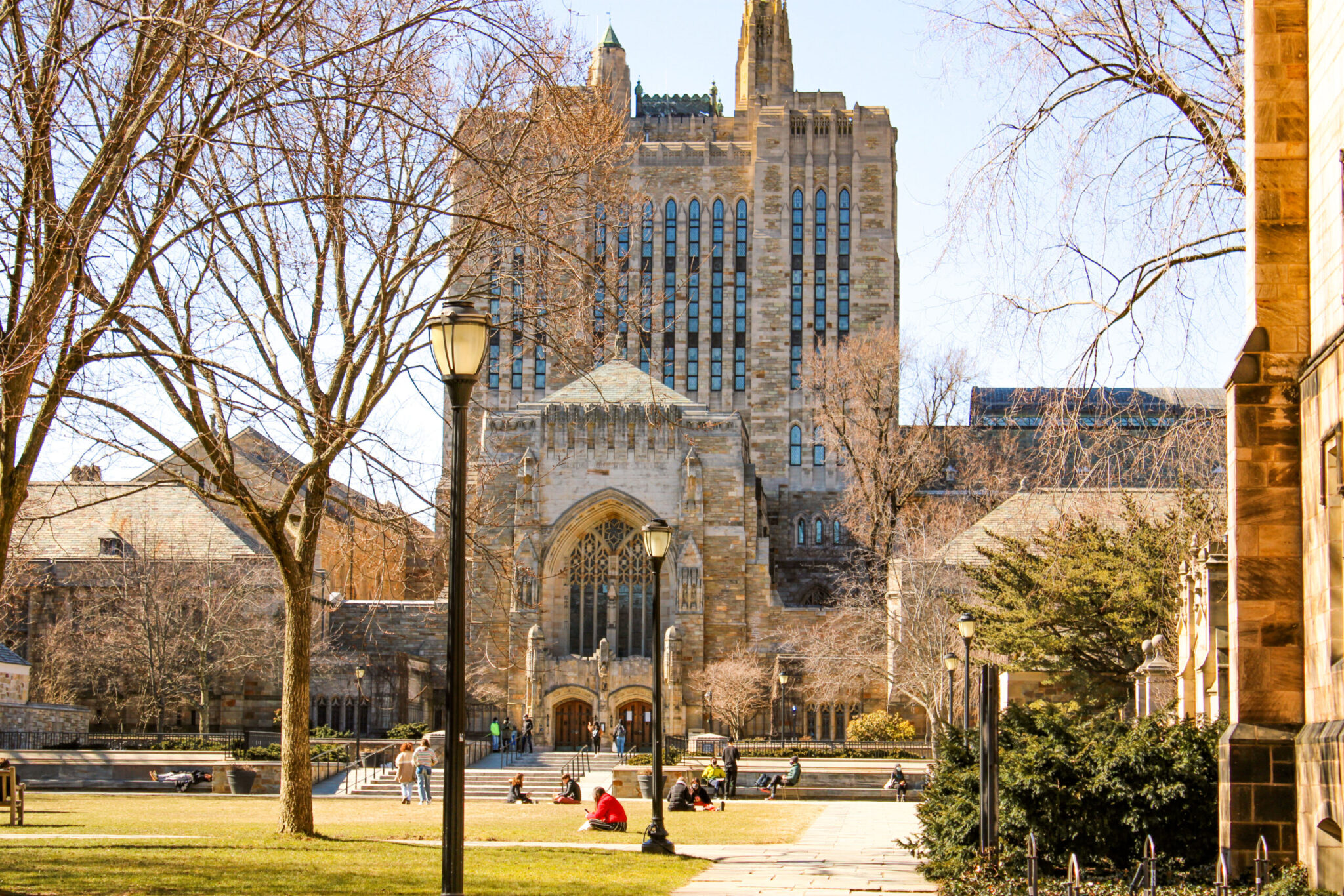‘We’ll just admit fewer students’: University scrambles to accommodate large first-year class
The 1,647 members of the class of 2027 began classes this week, prompting questions about the University’s ability to house and educate the ballooning undergraduate student population.

Jessie Cheung, Staff Photographer
When an unprecedented 72 percent of students accepted to Yale last spring chose to join the class of 2027, the University celebrated its successful recruitment season while scrambling to ease the impending possibility of an oversized class.
But now that students have returned to campus, some Yalies are voicing concerns about the University’s ability to adapt to its unexpectedly high enrollment.
“Although the admissions office did not expect to enroll a class that was this large, we are very happy that more talented students will receive a Yale education, and we appreciate the Yale College Dean’s Office’s hard, thoughtful, and proactive work over the past four months to respond and adapt,” Dean of Admissions and Financial Aid Jeremiah Quinlan wrote to the News in an Aug. 30 email.
Last April, the University hosted its largest-ever Bulldog Days, the University’s annual on-campus admitted students event. When it came time for admitted students to make their college enrollment decisions last May, Yale fared better — nearly five percent better — than usual.
The result? A class materially larger than Yale anticipated.
Gap years
The large class size triggered preemptive efforts by the University to lower fall enrollment in the College’s class of 2027.
In a May 11 email obtained by the News, the admissions office encouraged students who accepted their admissions offers last spring to consider taking a year off before matriculating to Yale. The initial deadline to request a gap year was May 1; the office sent the May 11 email to students who had not yet declared intent to delay enrollment.
“I am writing to encourage all newly admitted students to consider the possibility that postponing matriculation – also known as taking a gap year – might be an appealing option,” Quinlan wrote in the email. The option to take a gap year, the office noted, would remain a possibility for those interested throughout the spring and summer.
While 55 students postponed matriculation, 1,647 students still enrolled this year — 90 students more than the class of 2026.
Mark Dunn, senior associate director of outreach and communications at the Office of Undergraduate Admissions, told the News that while the email did not reflect any “change in policy,” it was “initiated in response to the higher-than-anticipated yield.”
Following its email encouraging then-enrolled students to postpone matriculation, the admissions office held a virtual information session for students to explore the possibility of taking a gap year.
“We did not see an increase in students postponing their matriculation compared with a typical year, but the message and session were very well received and we plan to repeat them in the future,” Dunn wrote.
Orientation and teaching staff
In addition to encouraging gap years to address over-enrollment, the University expanded instructional capacity and orientation options.
Dean of Yale College Pericles Lewis told the News that the University has hired additional faculty to teach popular multi-section courses and additional teaching fellows to lead discussion sections in popular first-year lecture courses, such as introductory math and English courses, as well as an additional Directed Studies section.
The University also offered a variety of new Camp Yale orientation programs this year to support student transitions into college life. New programs this year included Camp Yale Arts, Yale Reserved and LAUNCH.
Lewis also noted that despite the uptick in enrolled students, the “quality of a Yale education” will not change.
In order to reduce the undergraduate student population to a long-term steady state, adaptations may still be necessary from an admissions standpoint, Lewis told the News.
“We’ll just admit fewer students,” Lewis said. “So basically if the admit rate was around 4.5 percent this year, it might be 4.2 percent next year. Usually we get more applicants each year, so we might be even below 4.2 percent … I don’t like turning away 96 percent of the students. But we can’t admit 50 percent of our applicants.”
Room and board
Last year, students reported on-campus housing shortages linked to increased enrollment in the class of 2025. An over-enrolled class of 2027 could bring similar issues or exacerbate existing ones.
Lewis told the News, however, that an increased number of students living off campus has helped ease housing concerns. Per Quinlan, no upper-level students were forced to seek off-campus housing, despite the large first-year class size.
In some colleges and buildings on Old Campus, suites that were vacant last year received renovations and updates in preparation for move-in this fall.
Administrators told the News that Yale Hospitality, however, boasts a large capacity and does not expect complications given the large class size.
“We continue to see changes in the student population year after year, and our agile team doesn’t foresee any challenges in supporting that growth,” Associate Vice President of Yale Hospitality Rafi Taherian wrote to the News.
Adam Millman, senior director and retail operations manager for Yale Hospitality, cited the fact that even when the Schwarzman Center was shut down for renovations, the office was still able to easily support the entire student population.
Still, some students have noticed changes in day-to-day University dining patterns.
“Even in the first two days, I noticed that Commons seemed even more crowded than last year,” Jack Stemerman ’26 told the News. “The line kept stopping because they would run out of food too fast and have to wait to make more.”
The largest-ever first-year class to enroll was the class of 2025, which featured 1,789 students.







